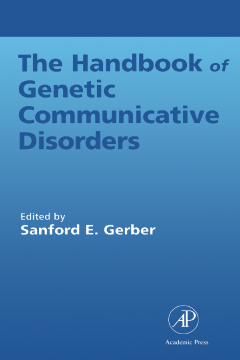
Additional Information
Book Details
Abstract
Many professionals in the communicative sciences are relative newcomers to the understanding of genetics as it applies to communicative disorders. A speech-language clinician certainly can diagnose and treat stuttering, for example, but that clinician may not be fully aware of the role of a genetic counselor for the family of a stutterer. An audiologist may be able to assess a hearing impairment, but an understanding of the underlying genetics of that impairment would make that person a better audiologist. The medical geneticist, similarly, could have an inadequate appreciation of how our genes may affect language function. All of these professionals need a source that brings together essential ideas from related disciplines.
This is a book about human communication, both normal and disordered, and how our communication abilities are affected by our genes. Many, probably most, communicative disorders are of genetic origin, even if not exclusively genetic. A knowledge of genetics, therefore, is essential to our understanding of communication, of communicative disorders, of how such disorders come about, and of how to deal with them.
This is the only book to consider the genetics of communicative disorders from a broad perspective. It examines genetics, embryology, and epidemiology, along with study of the hearing, speech, and language disorders themselves. It also introduces review of issues relevant to genetic counseling and ethics. It is a unique and comprehensive work whose contributors are the leading experts in their respective disciplines.
* Only book available to consider all communicative disorders
* Unparalleled scrutiny of the sciences basic to the genetics of communicative disorders
* Specific attention paid to clinical and ethical issues
"This is an excellent book to help clinicians understand some of the concepts involved in genetic research. The melding of basic science and clinical information, and the inclusion of a wide variety of communication disorders, makes this book unique among those covering genetics.
Four Stars!"
—DOODY'S
"This work will be useful in health libraries and the health collections of academic libraries. This information is readable and current and all essays include extensive lists of references along with the work's concluding bibliography."
—AMERICAN REFERENCE BOOKS ANNUAL
